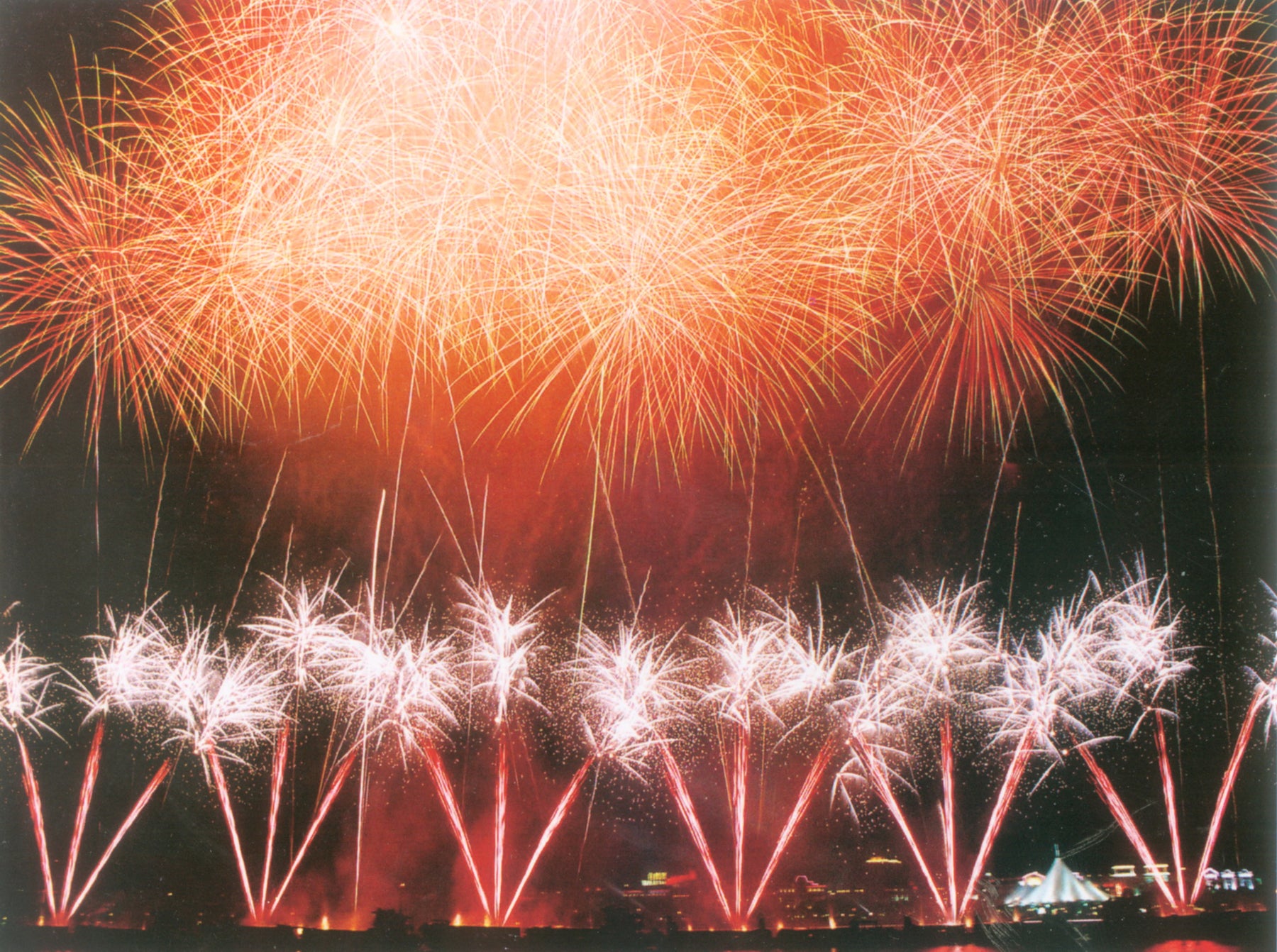
Omagari Japanese Fireworks Competition
WHAT: Omagari National Japanese Fireworks Competition.
WHY: It's a firework shell competition.
WHEN: Saturday 22nd August 2015.
WHERE: On the banks of the Omono-Gawa River, Akita, Japan.
WHAT TIME: Starts in the day around 5:30pm and continues till it gets dark.
BEST VIEWING SPOTS: Along the Marukogawa River - located near the Omagari Station.
ADMISSION COST: Free - but paid seating is also available.
Fireworks have been one of THE most important aspects of the Summer-time in Japan for centuries and there is no sign of this love affair with beautiful pyro ending any time soon.
Throughout the Summer there are firework festivals across the country as each region holds their own event to show off their wares. The Omagari firework festival started in 1910 and it was originally a firework attraction at the site of the Shrine of Suwa-jinja. This is just one of tens of thousands of Shine’s created to stop Christianity taking over completely so they welcomed visitors to reinforce the traditions of Shinto, which survives to this day and over 80% of the population follow the religion which some have combined with Buddhist teachings.
As the mid summer weekend arrives, as in the UK, families spend the evenings in parks and on the riverbanks with their picnic blankets watching the beautiful daytime and evening pyrotechnics. Each Summer across Japan, there are 14 full on festivals celebrating the art of ‘Hanabi’.
Although the blend of colours and sound effects will make some differences, there are really only a few different types of shell burst:
Warimono – This description indicates a ball-shaped shell burst with the stars being very precisely packed into the housing shell. On bursting, the more spherical the shell the more the crowds will appreciate it as it is a sign of excellence and indicates the love and care taken by the creator to ensure the break is as accurate as feasibly possible.
Pokamona – This one reaches the set altitude and then splits in two igniting the enclosed parts which break in irregular pattern and direction.
Han Warimono – This one is a super-shell packed with smaller ‘mini’ shells which are on a delayed burst, so it’s a little like having a huge balloon which pops releasing lots of smaller ones with all then go on to burst in a ball shape.
Katamono – Usually, the ‘novelty’ burst type of shell, the Katamono usually breaks into a drawing in the night skies overhead. They usually feature hearts, smiley faces, space ships, squid and footprints. This is a difficult one to achieve as any wind will blow the resulting burst out of shape to such a degree it would be difficult to identify what the intended arrangement was.
Of course, being shells they can only ever be fired by a trained professional firework technician in accordance with very strict regulations in regards to when and where they can be fired. A 10 inch firework shell when fired from a mortar tube is travelling 263 feet per second muzzle velocity (the speed it leaves the tube) but this of course will lower the further it travels. The shell will reach a height of 1000ft and have a 450 foot burst width - Astonishing.
I would add that the ones fired in Japan are generally in the early stages of the event are fired singly, giving the manufacturers the opportunity to tell the spectators via a PA system what they are about to see. At the ‘finale’ there will be a huge number of shells reaching the skies above to the delight of the crowds.
